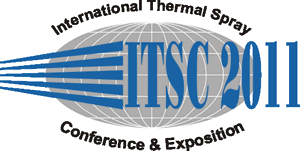
|
| Abstract No.: |
|
Scheduled at:
|
Wednesday, September 28, 2011, Saal B2.2 11:25 AM
New Processes 1
|
|
| Title: |
Plasma spray - physical vapor deposition of low conductivity environmental barrier coating systems
|
|
| Authors: |
Bryan Harder* / NASA Glenn Research Center, USA
Dongming Zhu / NASA Glenn Research Center, OH
|
|
| Abstract: |
Protection coating systems for turbine engine materials have become increasingly complex in composition and architecture in order to meet constantly increasing temperature demands. In the development of the next generation of turbine thermal and environmental barrier coating systems, traditional processing methods may not be viable due to limitations in microstructural or compositional flexibility with advanced materials. A new processing method called Plasma Spray-Physical Vapor Deposition (PS-PVD) has been developed to fill the gap between conventional thermal spray processes and vapor phase methods. PS-PVD technology allows for the deposition of advanced materials as either thin, dense coatings or vapor-deposited columnar microstructures by changing the processing conditions. In this work, multilayer environmental barrier coatings were applied to ceramic matrix composite substrates using the PS-PVD coater at NASA Glenn Research Center. The PS-PVD process has the flexibility to generate a range of coating structures. A dense rare earth silicate coating was used to protect the underlying material from water vapor ingress, and a columnar low thermal conductivity (k) doped zirconia layer was applied to thermally insulate the underlying layers. An experimental matrix varying powder feed rate and substrate temperature was used to investigate the effect of processing conditions on the architecture and performance of the vapor processed low k coating. Samples were evaluated using scanning electron microscopy, X-ray diffraction and laser testing to determine microstructure, thickness, phase structure, and thermal conductivity.
|
|
